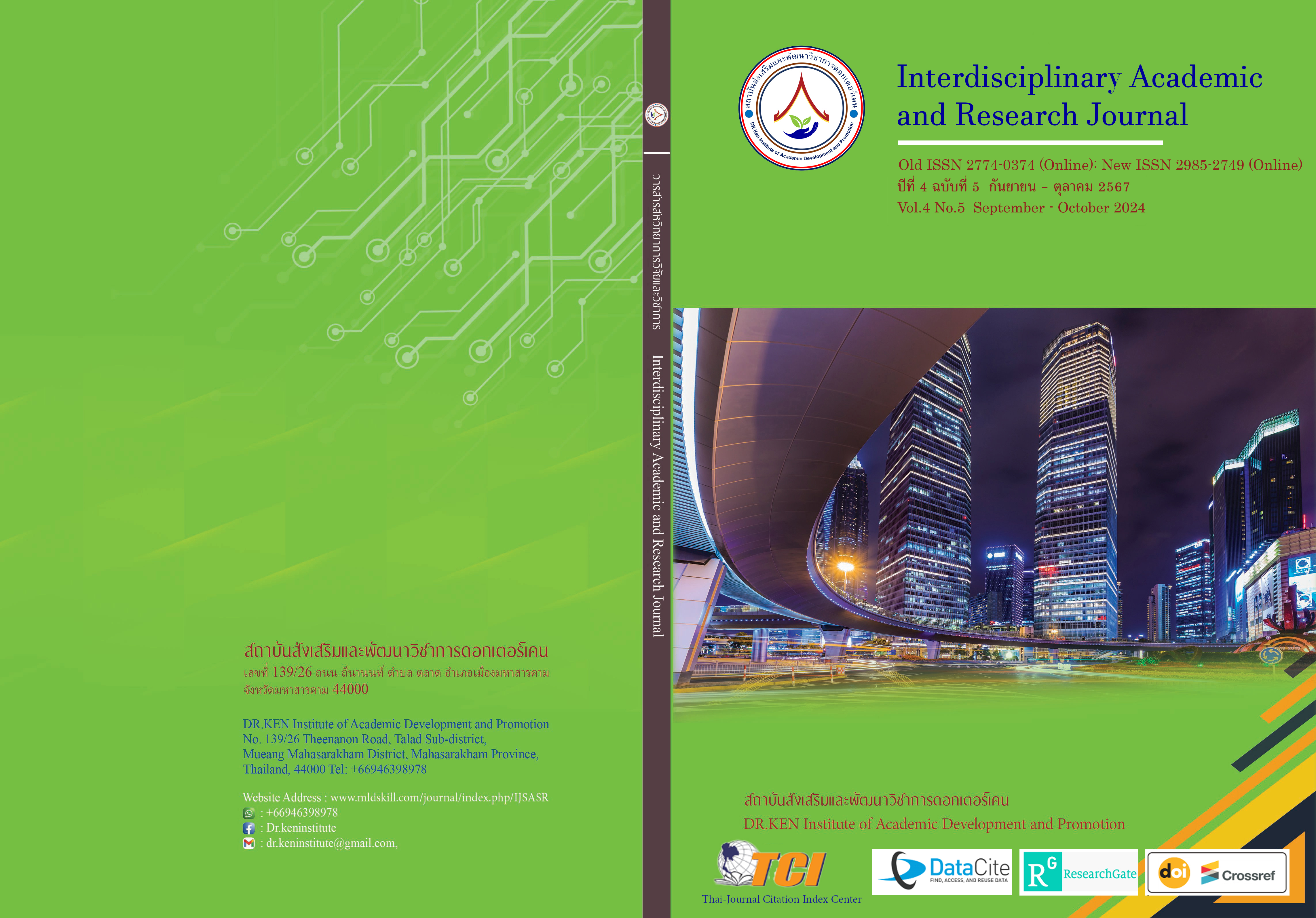Cost Analysis of Thai Herbs in Maha Sarakham Province
DOI:
https://doi.org/10.60027/iarj.2024.277669Keywords:
Thai Herbs; , Cost; , Returns on InvestmentsAbstract
Background and Aims: The Herb City Project has designated Maha Sarakham Province as an extension area. Efforts are being made to convert monoculture to mixed cropping in order to increase farmers' income and self-sufficiency. The purpose of this study is to examine the expenses and profits incurred by agricultural groups in Maha Sarakham Province when they invest in Thai herbs.
Methodology: The study used qualitative techniques, conducting structured interviews with 20 farmers in the Maha Sarakham Province to collect data.
Results: The average yearly sales for the farmers are as follows: turmeric (67,200 baht), roselle (43,750 baht), lemongrass (17,850 baht), and Thai jasmine rice (105 baht). The highest return on investment (ROI) is 71.08% for turmeric, followed by 48.96% for lemongrass, 28.26% for Thai jasmine rice 105, and 64.00% for roselle. Thai jasmine rice 105's net profits are 2,690 baht, turmeric's 47,768 baht, roselle's 28,000 baht, and lemongrass' 8,740 baht all follow the same pattern.
Conclusion: According to the data, farmers can make the most money from turmeric, which has the highest average annual sales and return on investment (ROI). Roselle, lemongrass, and Thai jasmine rice 105 are the next most profitable crops. Both net profits and return on investment are ranked similarly in terms of profitability.
References
กรมการแพทย์แผนไทยและการแพทย์ทางเลือก กระทรวงสาธารณสุข. (2566). แผนปฏิบัติการด้านสมุนไพรแห่งชาติฉบับที่ 2 พ.ศ. 2566 - 2570. กรุงเทพฯ: กระทรวงสาธารณสุข.
เพ็ญนภา เชาวนา, ศุภสุตา ตันชะโร, และอำมรรัตน์ คงกะโชติ. (2564). การวิเคราะห์ต้นทุนและผลตอบแทนจากการลงทุนปลูกข้าวของเกษตรกร ในอำเภอรัตภูมิ จังหวัดสงขลา. สงขลา: มหาวิทยาลัยเทคโนโลยีราชมงคลศรีวิชัย.
สถาบันวิจัยวิทยาศาสตร์และเทคโนโลยีแห่งประเทศไทย (วว.). (2566). วว. ต่อยอดวิจัยพัฒนา. Retrieved May 1, 2024, from: https://www.mhesi.go.th/index.php/all-media/infographic/8746-660314general.html.
สำนักงานจังหวัดมหาสารคาม. (2564). แผนพัฒนาจังหวัดมหาสารคาม พ.ศ. 2566-2570. มหาสารคาม: สำนักงานจังหวัดมหาสารคาม.
สำนักงานสภาพัฒนาการเศรษฐกิจและสังคมแห่งชาติ. (2565). แผนพัฒนาเศรษฐกิจและสังคมแห่งชาติ ฉบับที่ 13 (พ.ศ. 2566 - 2570). กรุงเทพฯ: สำนักงานสภาพัฒนาการเศรษฐกิจและสังคมแห่งชาติ.
อารีกมล ต.ไชยสุวรรณ, วรรณา มังกิตะ, สิริยุพา เลิศกาญจนาพร, สรียา ทรัพย์ศิริ, และธีราพัฒน์ จักรเงิน. (2560). การวิเคราะห์ต้นทุนและผลตอบแทนการปลูกสมุนไพรของกลุ่มเกษตรกรบ้านหนองสุวรรณ ตำบลบ้านกลาง อำเภอสอง จังหวัดแพร่. วารสารศิลปศาสตร์ มหาวิทยาลัยแม่โจ้, 5(1), 83-96.
Pholphirul, P., & Rattanakhamfu, S. (2019). Economic Analysis of Agricultural Practices and Their Impact on Rural Development in Thailand. Asian Economic Journal, 33(3), 287-309.
Siriwardhana, C., Perera, K., & Kumara, S. (2020). Profitability and Economic Sustainability of Herbal Crop Cultivation: A Comparative Study. Journal of Agricultural Economics, 71(2), 123-136.
Downloads
Published
How to Cite
Issue
Section
License
Copyright (c) 2024 Interdisciplinary Academic and Research Journal

This work is licensed under a Creative Commons Attribution-NonCommercial-NoDerivatives 4.0 International License.
Copyright on any article in the Interdisciplinary Academic and Research Journal is retained by the author(s) under the under the Creative Commons Attribution-NonCommercial-NoDerivatives 4.0 International License. Permission to use text, content, images, etc. of publication. Any user to read, download, copy, distribute, print, search, or link to the full texts of articles, crawl them for indexing, pass them as data to software, or use them for any other lawful purpose. But do not use it for commercial use or with the intent to benefit any business.
















.png)


